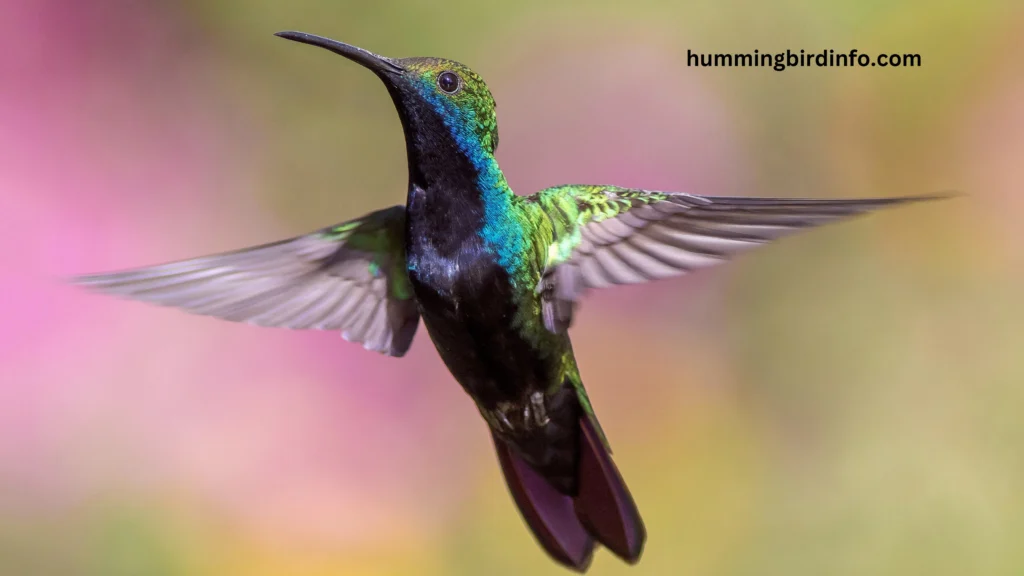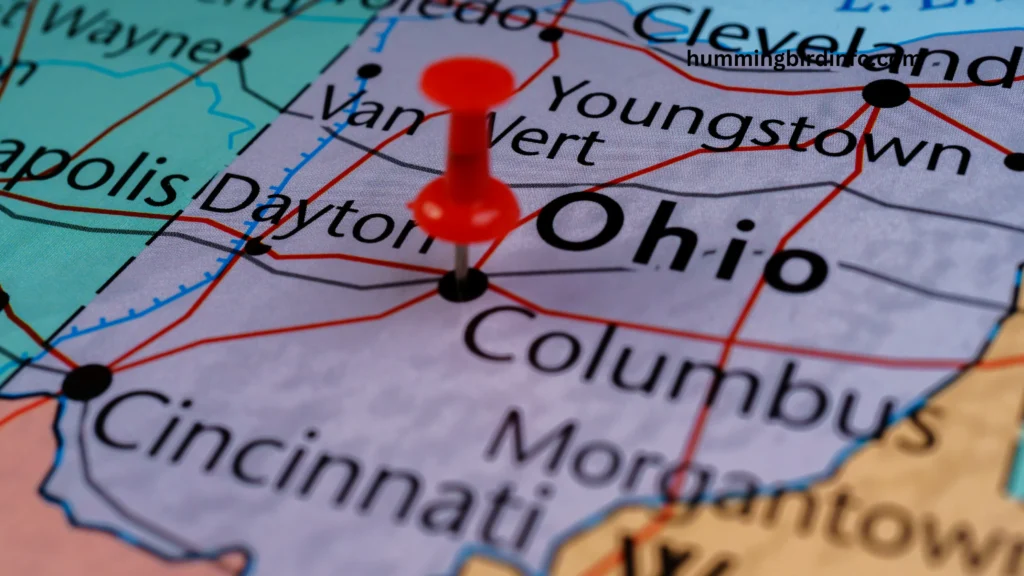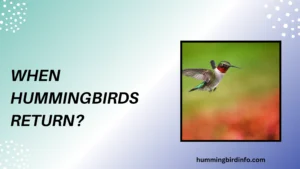Ohio’s spring and summer landscapes burst to life with lush forests, colorful gardens, and buzzing insects that paint a lively backdrop for nature lovers. Amid this vibrant scene, one of the smallest and most dazzling creatures makes its annual appearance—the hummingbird, a tiny flying jewel that captivates all who see it.
These miniature marvels bring movement, sparkle, and an air of magic to Ohio’s warm months, drawing the eyes of birdwatchers and garden enthusiasts alike.
Each year, Ohioans eagerly anticipate the return of these aerial acrobats, whose swift movements and shimmering feathers seem almost otherworldly. Their presence is more than just a beautiful sight; hummingbirds play a crucial role in the state’s ecosystem as pollinators, helping to sustain many flowering plants and maintain biodiversity.
Understanding which hummingbirds visit Ohio, their habits, and how to support them connects residents to the natural world in a deeply meaningful way.
In this article, we will explore the main hummingbird species that call Ohio home during the warmer seasons, focusing on their identification, habits, migration, and the rare visitors who sometimes stray into the state.
Whether you’re a seasoned birdwatcher or simply curious about these incredible birds, this guide will open your eyes to the wonders of Ohio’s tiny emerald visitors.
Contents
I. The Primary Summer Resident: Ruby-throated Hummingbird (Archilochus colubris)
1. Identification
The male Ruby-throated Hummingbird is instantly recognizable by its brilliant, iridescent ruby-red throat patch (gorget) that can appear black in poor lighting. Its emerald-green back and crown shimmer in the sunlight, contrasting with soft grayish-white underparts and a forked tail.

Females lack the bright gorget but have the same green back and crown, with white underparts and a rounded tail tipped in white. Juvenile males resemble females but may show some dark throat streaks before developing their full ruby gorget the next spring.
Small in size, they are among the smallest birds in North America, with a slender, straight black bill perfectly designed for sipping nectar.
2. Distribution and Habitat in Ohio
The Ruby-throated Hummingbird is the only regularly occurring hummingbird throughout Ohio during the breeding season. They arrive around late April to early May and stay until early October.
They thrive in diverse habitats such as deciduous woodlands, forest edges, meadows, swamps, and are especially common in suburban gardens and urban areas filled with nectar-rich flowers. This adaptability helps them spread evenly across all regions of the Buckeye State.
3. Migration
The Ruby-throated Hummingbird embarks on an incredible long-distance migration, spending winters in Central America and southern Mexico.
Amazingly, many make a non-stop flight across the Gulf of Mexico, an extraordinary feat given their tiny size. They time their spring arrival with the blooming of early nectar sources like trumpet creeper and honeysuckle, fueling their energy needs.
In the fall, they prepare for departure by gorging on nectar to build fat reserves before flying south again.
4. Feeding Habits
Primarily nectar feeders, Ruby-throated Hummingbirds seek out flowers such as cardinal flower, bee balm, jewelweed, salvia, petunias, and zinnias in Ohio gardens and wild areas. They hover effortlessly while using their long, forked tongues to lap up nectar.
In addition to nectar, they consume small insects and spiders to get protein, especially during breeding season when feeding their young.
This feeding behavior makes them vital pollinators in Ohio’s natural plant communities.
5. Breeding Behavior
Male hummingbirds perform spectacular courtship displays, including dramatic aerial dives and figure-eight flights to attract females.
The female builds a delicate cup-shaped nest from plant down, spider silk, and lichen on horizontal tree branches.
She incubates a typical clutch of two tiny white eggs and cares for the hatchlings alone.
The young fledge in a few weeks, ready to face their first migration the following year.
II. Potential Rare or Accidental Visitors
1. Rufous Hummingbird (Selasphorus rufus): The Western Wanderer
Though mainly a western North American species, the Rufous Hummingbird occasionally appears in Ohio, usually during fall migration when some stray eastward.
Males show a distinctive rusty-orange back and belly with a bright red-orange gorget, while females have a greenish back and rusty flanks with often a small orange throat spot.
Sightings are rare but exciting for Ohio birders and should be reported to local organizations.
2. Other Western Vagrants
Other western hummingbirds like Allen’s Hummingbird and the tiny Calliope Hummingbird have also been spotted very rarely in Ohio.
Allen’s males show a more orange back, and Calliope males are notable for their small size and magenta-rayed gorget.
These vagrants require careful identification due to similarities with other species.
3. Southern Vagrants
On very rare occasions, hummingbirds typically found further south, like the Buff-bellied Hummingbird, might appear as accidental visitors in Ohio.
These occurrences are extremely unusual but highlight how some birds occasionally wander far outside their usual range.
4. Causes of Vagrancy
Bird vagrancy can result from strong winds, navigational errors, or young birds exploring new territories.
These factors contribute to the fascinating and unpredictable appearances of rare hummingbird species in Ohio.
III. Ohio’s Ecological Context for Hummingbirds
Ohio’s native flowering plants form the backbone of hummingbird food supplies, with species blooming throughout the spring and summer seasons.
Seasonal shifts in nectar availability guide hummingbird movements and behavior across the state, ensuring they find food and breeding sites.
While hummingbirds compete with bees, butterflies, and other pollinators for nectar, their quick and specialized feeding style helps minimize direct conflict.
Preserving Ohio’s natural habitats, from woodlands to wetlands and gardens, is crucial to sustaining hummingbird populations and the broader ecosystem they support.
IV. Attracting and Observing Hummingbirds in Ohio
Ohioans can attract hummingbirds by setting up clean feeders with the right sugar-water mix (1 part sugar to 4 parts water), ideally from late April through September.
Planting a variety of native nectar-rich flowers encourages natural foraging and supports local biodiversity.
Avoiding pesticides is critical to protect both hummingbirds and their insect prey.
The best observation times are early mornings and late afternoons near feeders or flowering plants.

Engaging with citizen science programs allows residents to contribute valuable data on hummingbird sightings and migration patterns.
Conclusion
The Ruby-throated Hummingbird remains Ohio’s star hummingbird, enchanting residents each warm season with its dazzling colors and energetic flight.
Though rare, the occasional appearance of western or southern hummingbird species adds excitement and wonder to Ohio birding.
By providing clean feeders and planting native flowers, Ohioans play a vital role in supporting these delicate birds and preserving a piece of the state’s natural heritage.
The annual return of hummingbirds is a reminder of nature’s resilience and beauty, inspiring continued efforts to protect and appreciate these emerald visitors for generations to come.
FAQs
What hummingbird species are commonly found in Ohio?
Ruby-throated Hummingbird is the most common species during the breeding season.
When do hummingbirds arrive in Ohio?
They typically arrive from late April to early May as nectar sources begin blooming.
Do hummingbirds stay in Ohio year-round?
No, they migrate south for the winter, usually leaving by early October.
Can I attract hummingbirds to my garden in Ohio?
Yes, by using clean feeders with sugar water and planting native nectar-rich flowers.
Are there any rare hummingbirds seen in Ohio?
Occasionally, rare visitors like the Rufous Hummingbird or other western species appear.
What do hummingbirds eat besides nectar?
They also consume small insects and spiders for protein.








